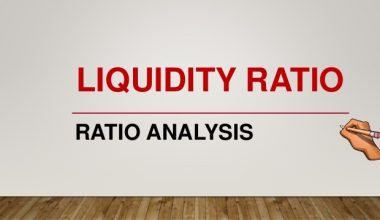When you hear the words “Equity Capital Market (ECM),” you might think of initial public offerings (IPOs) and companies raising billions of dollars in massive stock-market debuts.
But the group is about much more than setting records and creating headlines.
So, ECM groups, like other capital markets teams within banks, are a hybrid of investment banking and sales and trading.
What is an Equity Capital Market?
The equity capital market is a subset of the larger capital market in which financial institutions and businesses interact to exchange financial instruments and raise capital for businesses. Equity capital markets are riskier than debt capital markets, but they also have the potential for bigger profits.
Consider the following example.
Example
Company X wishes to raise equity capital by issuing 10,000 new shares at $23.12 per share. The corporation offers the new shares on the stock exchange, and investors buy them for a total of $10,000 x $23.12 = $231,200. Investors get ownership in the company by purchasing the stocks, which gives them voting rights in the firm’s decision-making as well as a claim right on the firm’s future earnings.
Company X raises funds to fund its activities through the stock market. Investors can keep the shares or sell them on the stock exchange if the price climbs above $23.12, resulting in a profit.

Instruments Traded in the Equity capital Market
Equity capital is obtained by exchanging a portion of a claim/right to a company’s assets for money. Thus, the worth of a company’s equity capital is the value of its existing assets and business. The equity capital market trades the following instruments:
#1. Common Stock
Common stock shares indicate ownership capital, and common stockholders get dividends from the company’s profits. The common shareholders have a vested interest in the company’s earnings and assets. So, they are only entitled to a portion of the company’s revenues after the preferred shareholders and bondholders have been paid.
#2. Preferred Stock
Preferred shares are hybrid security since they have characteristics of both debentures and common equity capital market. They are similar to debentures in that they have a fixed/stated dividend rate, a claim to the company’s revenue and assets before equity, no claim to the company’s residual income/assets, and no voting rights.
Preferred dividends, like common equity dividends, are not tax-deductible. Irredeemable preferred shares, redeemable preferred shares, cumulative preferred shares, non-cumulative preferred shares, participating preferred shares, convertible preferred shares, and stepped preferred shares are the many types of preferred shares.
#3. Private Equity
This refers to equity investments made through private placements. Private limited companies and partnerships raise it since they cannot trade their shares publicly. Typically, start-up and/or small/medium-sized businesses raise funding from institutional investors and/or wealthy individuals through this channel because:
- They have restricted access to bank funding due to banks’ hesitancy to lend to a startup with no track record; or,
- Because they lack a big and active shareholder base, they have restricted access to public equity.
Hence, the most major sources of private equity include venture capital funds, leveraged buyouts, and private equity funds.
#4. American Depository Reciepts (ADR)
An ADR is a certificate of ownership issued by an American bank in the name of a foreign company in exchange for foreign shares deposited in the bank by the said foreign company. The certificates are tradable and reflect ownership of stock in a foreign corporation.
ADRs encourage the trading of international shares in the United States by allowing foreign businesses’ shares to be admitted into a well-developed stocked market. Several foreign shares make them up (for instance, lots of 100 shares). ADRs and the dividends they entail are in US dollars.
#5. Receipts from Global Depository Institutions (GDRs)
Global Depositary Receipts (GDRs) are negotiable receipts that the financial institutions’ issue in developing countries against the shares of multinational corporations.
#6. Futures
A futures contract is a forward contract that the exchange is on an exchange. The entry and clearance are via clearinghouses. As a result, clearinghouses operate as go-betweens for the buyer and seller of a futures transaction. The clearinghouse also ensures that both parties follow the terms of the contract.
#7. Options
An option is a one-sided contract in which one party has the right but not the responsibility to sell or buy the underlying asset on or before a predetermined date. A call option grants the right to buy, whereas a put option grants the right to sell.
#8. Swaps
A swap is a transaction in which two parties exchange one stream of cash flow for another.
Functions of Equity Capital Market
The equity capital market serves as a hub for the following activities:
- Issues marketing
- Issue distribution
- Adding new concerns
- Initial Public Offerings (IPOs) (IPOs)
- Placements in private companies
- Derivatives trading
- Accelerated book creation
Equity Capital Market Participants
You can see enterprises of all sizes on the equity capital market, including large-cap, mid-cap, and small-cap companies. So, the ECM’s primary traders are investment bankers, retail investors, venture capitalists, angel investors, and securities firms.
Equity Capital Market Structure
The equity capital market is in two sections:
#1. Primary Equity Market
For the first time, companies can raise funds from the market. It is further subdivided into two sections:
Market for Private Placements
Companies can raise private equity through unquoted shares in the private placement market. It provides a platform for corporations to sell their assets directly to investors. Companies in this market don’t need to register securities with the Securities and Exchange Commission (SEC) since they do not face the same regulatory obligations as in the securities. So, the private placement market is typically illiquid and dangerous. As a result, investors in this market expect a premium to compensate for their risk-taking and the market’s lack of liquidity.
The Principal Public Market
The principal public market undergoes two activities:
- Initial Public Offerings (IPO): An IPO is a procedure by which a firm publicly issues equity for the first time and becomes listed on a stock exchange.
- Seasoned Equity Offering (SEO)/Secondary Public Offering (SPO): An SEO/SPO is the procedure through which an existing stock exchange-listed firm offers new/additional equity.
When a company issues stock on the stock exchange, it does so without issuing new shares; instead, it exchanges unquoted stock for quoted stock. So, in this instance, the initial investor receives the proceeds from the sale of newly quoted shares. If, on the other hand, the company generates new shares for the issuance, the revenues from their sale are for the corporation. Furthermore, because both IPOs and SEOs/SPOs require their underwriting services, investment banks are key players in the primary public market.
#2. Secondary Equity Market
The secondary stock market facilitates the sale and acquisition of existing shares. The secondary equity market generates no fresh money. So, the proceeds from the sale of the security are received by the holder of the security, not the issuer of the traded instrument. The secondary equities market is further subdivided into two sections:
Exchanges of Stocks
A stock exchange is a central trading place where the stock exchange’s listed companies’ shares are traded. Each stock market has its own set of criteria for listing a company. The following are the most regularly used criteria:
- Earnings minimum
- Capitalization of the market
- Tangible Assets (Net)
- The number of publicly traded shares
OTC (over-the-counter) markets
The OTC market is a network of dealers who permit bilateral stock trading between two parties without the use of a stock exchange as an intermediary. So, the over-the-counter (OTC) marketplaces are not consolidated or organized. As a result, they are more easily manipulated than stock markets.
Read Also: Debt Capital Markets (DCM): Detailed Guide!
The Benefits of Raising Funds in the Equity Capital Market
Raising funds in the equity market offers a corporation the following benefits:
- Credit risk reduction: The bigger the share of equity in a company’s capital structure, the less debt it needs to raise. Credit risk is decreased as a result.
- Greater operational flexibility: A lower debt-to-equity ratio allows for greater operational flexibility in the organization. This is because shareholders are less risk-averse than debt holders. After all, the former stand to benefit more if the firm makes a significant profit (via higher dividends) and suffer limited losses if the company performs poorly (because of limited liability).
- The issuance of equity also serves as a signal that the company is doing well financially.
Disadvantages of Raising Capital in the Equity Capital Market
When a corporation raises cash in the equity market, it has the following disadvantages:
- Dividends are not tax-deductible: Dividend payments, unlike interest payments on debt, are not tax-deductible.
- The company is being scrutinized more closely: In the equity market, investors rely largely on the company’s financial statements to make investment decisions. As a result, the corporation and its financial statements are subject to stricter disclosure standards and scrutiny.
- Maintaining a low debt-to-equity ratio means that a greater number of shareholders have a claim to the company’s profits. As a result, the company may be forced to reduce its retained earnings, even if it means lower long-term profitability, to pay a competitive dividend to shareholders in the near run.
Investment Banking vs. Equity Capital Market
We get a lot of queries about how ECM differs from investment banking.
So, the truth is that it is a subset of investment banking, and practically all large and mid-sized banks have equity capital markets teams.
The primary difference is that the organization concentrates solely on equity deals rather than debt or M&A deals, and it works across multiple industry verticals rather than just one.
What is a delisting?
Delisting occurs when a company’s stock is no longer traded publicly. There are a number of factors that can contribute to this, including the company’s poor financial performance, the inability to meet listing requirements, or the company’s own decision to withdraw from public trading. Reduced liquidity and a drop in market value for shareholders’ shares are just two potential downsides to a delisting.
What is a greenshoe option?
Underwriters are given the “greenshoe option,” or the right to sell more shares of stock in an initial public offering (IPO) if demand for the stock is higher than anticipated. Investors have the chance to buy into the company at a lower price thanks to this option, and the company is able to raise more money.
What is an open offer?
When a company makes a secondary offering of new shares to its existing shareholders at a discount, this is known as an open offer. The primary motivations for doing so are to boost the company’s valuation and thereby attract more investors. Increasing shareholder engagement and protecting the company from a hostile takeover are two additional goals that can be achieved through an open offer.
What is a tender offer?
In a tender offer, the company or a third party makes a public offer to buy a large number of shares from existing shareholders at a price higher than the market price. In order to gain control of a company or a sizable stake in a company without going through the lengthy and expensive process of a full takeover, tender offers are commonly used.
Equity Capital Market FAQs
What does equity capital market do?
Equity Capital Markets (ECM) is the team or group in charge of advising on equity, equity-linked, and equity-derived instruments such as shares, futures, swaps, and options. An ECM team will collaborate closely with a client to manage transactions, plan stock offerings, and increase valuation.
What is DCM and ECM?
ECM is an acronym for Equity Capital Markets, whereas DCM is an acronym for Debt Capital Markets. Both business groups, as the names imply, are linked to substantial pools of capital in the wholesale money markets, one being the equities markets and the other the debt markets.
What is meant by equity capital?
They are capital (such as stock or surplus earnings) that is free of debt especially: capital received for an interest in the ownership of a business.
What is a equity market example?
The equity market (often referred to as the stock market) is the market for trading equity instruments. Stocks are securities that are a claim on the earnings and assets of a corporation (Mishkin 1998). An example of an equity instrument would be common stock shares, such as those traded on the New York Stock Exchange.






